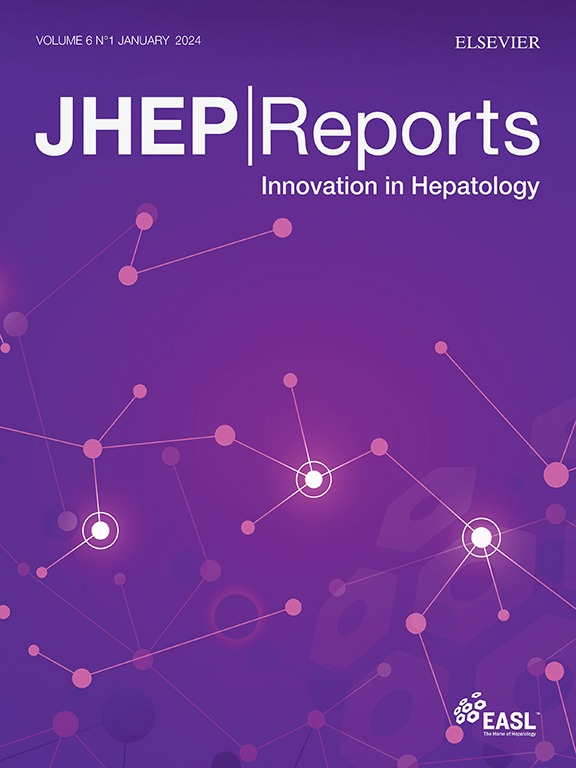Recent advances in systemic therapy for advanced biliary tract cancer: A systematic review and meta-analysis using reconstructed RCT survival data
IF 9.5
1区 医学
Q1 GASTROENTEROLOGY & HEPATOLOGY
引用次数: 0
Abstract
Background & Aims
Gemcitabine/cisplatin (GemCis) was the long-standing first-line treatment for advanced biliary tract cancers (BTCs). Following positive results from the TOPAZ-01 and KEYNOTE-966 trials, immune checkpoint inhibitors (ICIs) combined with chemotherapy are now the standard of care. We aim to compare the efficacy of first-line therapies for advanced BTCs.
Methods
Our systematic review included studies from five databases focusing on English-language articles published between January 2010 and June 2024. We included randomized clinical trials (RCTs) that featured GemCis in a treatment arm for treatment-naive adults with advanced BTCs. The primary endpoints were overall survival (OS) and progression-free survival. We conducted a one-stage meta-analysis using reconstructed survival data, Cox-based models, and restricted mean survival time (RMST).
Results
After screening 8,797 studies, 17 RCTs were selected, involving a total of 4,584 patients. Of these, 2,140 (46.7%) received GemCis. The majority (68.9%) were diagnosed with intrahepatic or extrahepatic cholangiocarcinoma, and 80% had metastatic disease at the time of treatment. The pooled median OS in the GemCis group was 11.6 months (95% CI 11.3–12.2 months). GemCis plus pembrolizumab (hazard ratio [HR] 0.99, 95% CI 0.98–0.99; p <0.001), GemCis plus durvalumab (HR 0.98, 95% CI 0.97–0.99; p = 0.015), GemCis plus S-1 (HR 0.97 95% CI 0.95–0.99; p <0.001), and GemCis plus nab-paclitaxel (HR 0.98, 95% CI 0.98–0.99; p <0.001) demonstrated superior OS compared with GemCis alone. These combinations also showed increases in RMST by +1.1, +2.5, +2.8, and +2.1 months, respectively. In terms of progression-free survival, GemCis with ICIs (HR 0.91, 95% CI 0.78–0.94; p <0.001), GemCis plus S-1 (HR 0.98, 95% CI 0.96–0.99; p = 0.003), and GemCis plus nab-paclitaxel (HR 0.98, 95% CI 0.97–0.99; p <0.001) also demonstrated superiority, with corresponding RMST increases of +0.7, +1.9, and +2.5 months, respectively.
Conclusions
Despite incremental advancements, a breakthrough in advanced BTC treatment remains elusive. Further improvements in treatment efficacy may require biomarker identification to optimize combinational therapies for better patient selection.
Impact and implications
This study analyzed recent RCTs, including KEYNOTE-966, TOPAZ-1, NIFE, and SWOG 1815, involving 4,584 patients with advanced biliary tract cancer. A meta-analysis of 17 treatment arms, using reconstructed survival data, confirmed the modest survival benefit of GemCis plus ICIs, supporting its guideline adoption. The findings, however, highlight the need for biomarker identification and better patient selection.

求助全文
约1分钟内获得全文
求助全文
来源期刊

JHEP Reports
GASTROENTEROLOGY & HEPATOLOGY-
CiteScore
12.40
自引率
2.40%
发文量
161
审稿时长
36 days
期刊介绍:
JHEP Reports is an open access journal that is affiliated with the European Association for the Study of the Liver (EASL). It serves as a companion journal to the highly respected Journal of Hepatology.
The primary objective of JHEP Reports is to publish original papers and reviews that contribute to the advancement of knowledge in the field of liver diseases. The journal covers a wide range of topics, including basic, translational, and clinical research. It also focuses on global issues in hepatology, with particular emphasis on areas such as clinical trials, novel diagnostics, precision medicine and therapeutics, cancer research, cellular and molecular studies, artificial intelligence, microbiome research, epidemiology, and cutting-edge technologies.
In summary, JHEP Reports is dedicated to promoting scientific discoveries and innovations in liver diseases through the publication of high-quality research papers and reviews covering various aspects of hepatology.
 求助内容:
求助内容: 应助结果提醒方式:
应助结果提醒方式:


